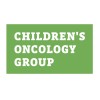
SJDAWN: St. Jude Children's Research Hospital Phase 1 Study Evaluating Molecularly-Driven Doublet...
Anaplastic AstrocytomaAnaplastic Ependymoma83 moreApproximately 90% of children with malignant brain tumors that have recurred or relapsed after receiving conventional therapy will die of disease. Despite this terrible and frustrating outcome, continued treatment of this population remains fundamental to improving cure rates. Studying this relapsed population will help unearth clues to why conventional therapy fails and how cancers continue to resist modern advances. Moreover, improvements in the treatment of this relapsed population will lead to improvements in upfront therapy and reduce the chance of relapse for all. Novel therapy and, more importantly, novel approaches are sorely needed. This trial proposes a new approach that evaluates rational combination therapies of novel agents based on tumor type and molecular characteristics of these diseases. The investigators hypothesize that the use of two predictably active drugs (a doublet) will increase the chance of clinical efficacy. The purpose of this trial is to perform a limited dose escalation study of multiple doublets to evaluate the safety and tolerability of these combinations followed by a small expansion cohort to detect preliminary efficacy. In addition, a more extensive and robust molecular analysis of all the participant samples will be performed as part of the trial such that we can refine the molecular classification and better inform on potential response to therapy. In this manner the tolerability of combinations can be evaluated on a small but relevant population and the chance of detecting antitumor activity is potentially increased. Furthermore, the goal of the complementary molecular characterization will be to eventually match the therapy with better predictive biomarkers. PRIMARY OBJECTIVES: To determine the safety and tolerability and estimate the maximum tolerated dose/recommended phase 2 dose (MTD/RP2D) of combination treatment by stratum. To characterize the pharmacokinetics of combination treatment by stratum. SECONDARY OBJECTIVE: To estimate the rate and duration of objective response and progression free survival (PFS) by stratum.

Treatment With Dinutuximab, Sargramostim (GM-CSF), and Isotretinoin in Combination With Irinotecan...
GanglioneuroblastomaNodular1 moreThis phase II trial studies if dinutuximab, GM-CSF, isotretinoin in combination with irinotecan, and temozolomide (chemo-immunotherapy) can be given safely to patients with high-risk neuroblastoma after Consolidation therapy (which usually consists of two autologous stem cell transplants and radiation) who have not experienced worsening or recurrence of their disease. Dinutuximab represents a kind of cancer therapy called immunotherapy. Unlike chemotherapy and radiation, dinutuximab targets the cancer cells without destroying nearby healthy cells. Sargramostim helps the body produce normal infection-fighting white blood cells. Isotretinoin helps the neuroblastoma cells become more mature. These 3 drugs (standard immunotherapy) are already given to patients with high-risk neuroblastoma after Consolidation because they have been proven to be beneficial in this setting. Chemotherapy drugs, such as irinotecan and temozolomide, work in different ways to stop the growth of tumor cells, either by killing the cells, by stopping them from dividing, or by stopping them from spreading. They may also affect how well immunotherapy works on neuroblastoma cells. Giving chemo-immunotherapy after intensive therapy may work better in treating patients with high-risk neuroblastoma compared to standard immunotherapy.

B7H3 CAR T Cell Immunotherapy for Recurrent/Refractory Solid Tumors in Children and Young Adults...
Pediatric Solid TumorGerm Cell Tumor15 moreThis is a phase I, open-label, non-randomized study that will enroll pediatric and young adult research participants with relapsed or refractory non-CNS solid tumors to evaluate the safety, feasibility, and efficacy of administering T cell products derived from the research participant's blood that have been genetically modified to express a B7H3-specific receptor (chimeric antigen receptor, or CAR) that will target and kill solid tumors that express B7H3. On Arm A of the study, research participants will receive B7H3-specific CAR T cells only. On Arm B of the study, research participants will receive CAR T cells directed at B7H3 and CD19, a marker on the surface of B lymphocytes, following the hypothesis that CD19+ B cells serving in their normal role as antigen presenting cells to T cells will promote the expansion and persistence of the CAR T cells. Arm A CAR T cells include the protein EGFRt and Arm B CAR T cells include the protein HER2tG. These proteins can be used to both track and destroy the CAR T cells in case of undue toxicity. The primary objectives of the study will be to determine the feasibility of manufacturing the cell products, the safety of the T cell product infusion, to determine the maximum tolerated dose of the CAR T cells products, to describe the full toxicity profile of each product, and determine the persistence of the modified cell in the participant's body on each arm. Participants will receive a single dose of T cells comprised of two different subtypes of T cells (CD4 and CD8 T cells) felt to benefit one another once administered to the research participants for improved potential therapeutic effect. The secondary objectives of this protocol are to study the number of modified cells in the patients and the duration they continue to be at detectable levels. The investigators will also quantitate anti-tumor efficacy on each arm. Participants who experience significant and potentially life-threatening toxicities (other than clinically manageable toxicities related to T cells working, called cytokine release syndrome) will receive infusions of cetuximab (an antibody commercially available that targets EGFRt) or trastuzumab (an antibody commercially available that targets HER2tG) to assess the ability of the EGFRt on the T cells to be an effective suicide mechanism for the elimination of the transferred T cell products.

A Study of LY3295668 Erbumine in Participants With Relapsed/Refractory Neuroblastoma
NeuroblastomaThe reason for this study is to see if the study drug LY3295668 erbumine is safe in participants with relapsed/refractory neuroblastoma.

Activity Study of Bevacizumab With Temozolomide ± Irinotecan for Neuroblastoma in Children
NeuroblastomaThe purpose of this study is to investigate whether Bevacizumab (an anti-VEGF monoclonal antibody) added to a backbone chemotherapy regimen (Temozolomide, Irinotecan-Temozolomide or Topotecan-Temozolomide) demonstrates activity in children with relapsed or refractory neuroblastoma. Also, to investigate whether the addition of Irinotecan or Topotecan to Temozolomide increases the activity of chemotherapy.The primary objective of the study is the best response (Complete Response or Partial Response) while trial treatment, within 18 or 24 weeks depending on the arm of the trial the participant is randomised to. Secondary endpoints are assessing the side effects, the length of time before progression (Progression Free Survival) and overall survival (OS). This trial will address two important questions: does targeting blood vessel development using bevacizumab, (a monoclonal antibody against the Vascular Endothelial Growth Factor (VEGF)), add to the effect on a tumour when used with existing chemotherapy, compared to the effect of the existing chemotherapy alone (temozolomide)? NOTE- This question has been completed. does the addition of a second chemotherapy drug (irinotecan or topotecan) increase the effect on a tumour compared to the effect of one alone (temozolomide) NOTE - This question has been completed. does the addition of dinutuximab beta added to a backbone chemotherapy (temozolomide or temozolomide + topotecan) increase the effect of backbone alone. Patients aged 1-21 years of age with relapsed or refractory high-risk neuroblastoma are randomised to one of two treatment arms: temozolomide-topotecan (TTo) or dinutuximab beta-temozolomide-topotecan (dBTTo). Temozolomide (T), irinotecan-temozolomide (IT), bevacizumab-T (BT), BIT (bevacizumab-IT), bevacizumab-temozolomide-topotecan (BTTo) and dinutuximab beta-temozolomide (dBT) are now closed to recruitment.

Sorafenib and Cyclophosphamide/Topotecan in Patients With Relapsed and Refractory Neuroblastoma...
NeuroblastomaThis study will combine three drugs: sorafenib, cyclophosphamide and topotecan. Adding sorafenib to cyclophosphamide and topotecan may increase the effectiveness of this combination. The investigators first need to find out the highest dose of sorafenib that can be given safely together with cyclophosphamide and topotecan. This is the first study to test giving these three drugs together and will help determine the highest dose of sorafenib that can safely be given together with cyclophosphamide and topotecan to patients with resistant/relapsed neuroblastoma.

N2012-01: Phase 1 Study of Difluoromethylornithine (DFMO) and Celecoxib With Cyclophosphamide/Topotecan...
NeuroblastomaThis study will combine an oral drug called DFMO with celecoxib (also oral) and two IV chemotherapy medicines called cyclophosphamide and topotecan. To find the highest dose of DFMO that can be given with celecoxib, cyclophosphamide and topotecan without causing severe side effects. To find out the side effects seen by giving DFMO at different dose levels with celecoxib, cyclophosphamide and topotecan. To measure the levels of DFMO in the blood at different dose levels. To determine if your tumor gets smaller after treatment with DFMO, celecoxib, cyclophosphamide and topotecan. To determine if specific gene changes in you or your tumor makes you more prone to side effects or affects your tumor's response to the combination of DFMO, celecoxib, cyclophosphamide and topotecan. To determine if the amount of normal chemicals in your body called polyamines go down in response to DFMO, celecoxib, cyclophosphamide and topotecan, and whether you are more likely to have a good response to the treatment if they do.

Induction Therapy Including 131 I-MIBG and Chemotherapy in Treating Patients With Newly Diagnosed...
GanglioneuroblastomaLocalized Resectable Neuroblastoma4 moreThis pilot clinical trial studies induction therapy followed by iobenguane I 131 and chemotherapy in treating patients with newly diagnosed high-risk neuroblastoma undergoing stem cell transplant, radiation therapy, and maintenance therapy with isotretinoin. Radioisotope therapy, such as iobenguane I 131, releases radiation that kills tumor cells. Drugs used in chemotherapy, such as carboplatin, etoposide phosphate, busulfan, and melphalan, work in different ways to stop the growth of tumor cells, either by killing the cells or by stopping them from dividing. A peripheral stem cell transplant may be able to replace blood-forming cells that are destroyed by iobenguane I 131 and chemotherapy. Giving radioisotope therapy, chemotherapy, and peripheral stem cell transplant may kill more tumor cells.

Busulfan, Melphalan, Topotecan Hydrochloride, and a Stem Cell Transplant in Treating Patients With...
Solid TumorAdult Central Nervous System Germ Cell Tumor30 moreRATIONALE: Giving high-dose chemotherapy before an autologous stem cell transplant stops the growth of tumor cells by stopping them from dividing or killing them. Giving colony-stimulating factors, such as G-CSF, helps stem cells move from the bone marrow to the blood so they can be collected and stored. Chemotherapy is then given to prepare the bone marrow for the stem cell transplant. The stem cells are then returned to the patient to replace the blood-forming cells that were destroyed by the chemotherapy. PURPOSE: This clinical trial is studying how well giving busulfan, melphalan, and topotecan hydrochloride together with a stem cell transplant works in treating patients with newly diagnosed or relapsed solid tumor.

Neoadjuvant Dual Checkpoint Inhibition and Cryoablation in Relapsed/Refractory Pediatric Solid Tumors...
OsteosarcomaEwing Sarcoma8 moreThe is a phase II, single arm, open-label, multi-site trial studying the combination of cryoablation therapy and dual checkpoint inhibition with nivolumab (anti-PD-1) and ipilimumab (anti-CTLA-4) given at the recommended phase 2 dose (RP2D) in pediatric and young adult patients with relapsed or refractory solid tumors.
